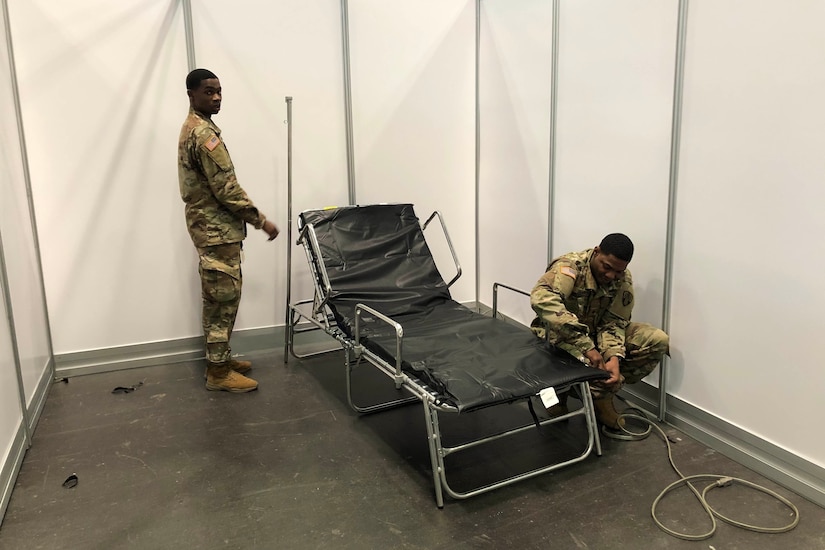March 31, 2020 | BY AIR FORCE TECH. SGT. SHANE HUGHES
As nearly 400 members of the Ohio National Guard go to work
each day packaging, transporting and distributing food and other essential
items to the state's most vulnerable populations, Air Force 1st Lt. Justin
Rainier is working as a logistics readiness officer and a temporary
intelligence officer assigned to the 178th Wing to ensure the guardsmen are
safe.
He isn't an intelligence officer by trade, but Rainier said
there is some overlap between both roles. They require him to determine how to
best allocate resources to complete the mission, which is the overarching
mission of the task force.
Keeping Service Members Smart ...
As a member of Joint Task Force 37, Rainier is supporting
Operation Steady Resolve as an intelligence officer.
He said his job is to gather intelligence information for
the various commanders to pass onto the soldiers and airmen working at the food
banks. Some of the information he gathers includes threats against the
guardsmen, severe weather and road conditions that might impact food
distribution routes.
"If you have flooding or road closures in some of the
more rural parts of the state, there might only be one road in or out,"
Rainier said. "If civilians can't get to the food bank because of flooding,
we have equipment that can ford through water and get that food where it’s
needed."
... And Safe
He said he's also tracking how COVID-19 is spreading
throughout the state to help guide decisions on how to best keep guardsmen
healthy while performing their missions.
"This is something fairly unprecedented," Rainier
said. "We've done all this before, but the difference here is the scale
and the duration, and we’re just getting started."
A New Realm
Rainier has worked quickly to master his new
responsibilities.
"I'm getting a crash course in just a sliver of what
they (intelligence officers) do every day," Rainier said. "This is a
new realm for me, but we as guardsmen are flexible by nature, because we never
know what the mission is going to be and it can always change at the drop of a
hat."
Maj. Nick Palmer, operations officer for the task force,
said: “I’ve been impressed by him since he walked in the door. He received
little to no guidance and he jumped right in, briefing terrain and weather
affects to the boss.”
Protecting the Community
Rainier said it's critical for the Guard to step in and help
ensure that people's basic needs are met to help keep the community safe and
healthy.
"We're serving a greater purpose," Rainier said.
"Everything we're doing is to try and save lives."
(Air Force Tech. Sgt. Shane Hughes is assigned to the Ohio
Air National Guard’s 178th Wing.)










